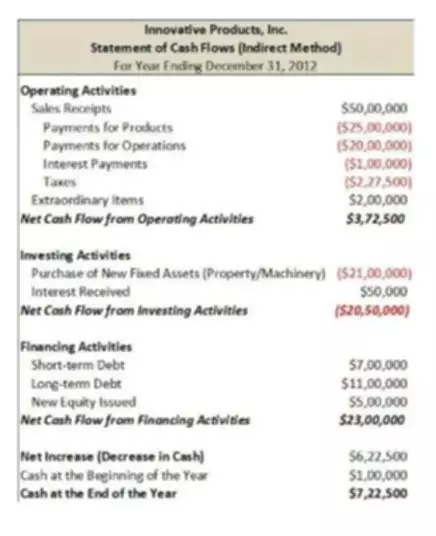Content
- Why use restaurant accounting software and tools?
- Beverage sales:
- Restaurant accounting software
- Outsourcing Your Restaurant Accounting
- Income Tax Reporting for the Employee Retention Credit
- Track Your Prime Costs
- Best Practice for Closing Out The House Bank:
- What about accounting for restaurant tips?

With these restaurant accounting tips, you can begin to organize your accounting records and have a better understanding of your financial picture. In the end, organization and accuracy are the keys to effective restaurant bookkeeping. A detailed daily operations summary report that can be generated from an automated accounting system will provide you with actionable insights on how to save on food and labor costs. These reports provide a thorough breakdown of your restaurant’s sales by location, time or service type.
- Cash accounting doesn’t recognize accounts payable, or bills you owe but have not yet paid.
- Fully automating your payment processes will give you the bandwidth to improve cash management processes as you can target making monthly batch payments.
- If you’re opening a franchise restaurant business, such as Pizza Hut or TGI Friday’s, you’ll source your food directly from suppliers as instructed by the home office.
- Once you’ve calculated your sales tax, be sure to pay on time so you don’t accrue any penalties and late fees.
- You need to analyze how funds are hitting your bank and set up your restaurant bookkeeping system to mirror that activity.
Insureon has licensed agents who work exclusively with restaurant owners. These dedicated agents know the specific risks restaurant owners face, and can help ensure your business is protected with the right policies and coverage limits. Most states have a tip credit that effectively lowers the state minimum wage for tipped workers. For example, employers in Ohio must pay non-tipped workers at least $8.70 per hour in 2020. Keeping a record of spoilage should help you ascertain the right amount of food and beverages to order in the future. However, running out of inventory is just as problematic for your bottom line.
Why use restaurant accounting software and tools?
At first, restaurant accounting can seem like a daunting and time-consuming prospect. However, if you invest a little bit of time researching and planning how best to set up and manage your restaurant accounting, it will become a much more manageable process. Partnering with an accountant can also help ensure your restaurant complies with regulatory requirements, such as taxation and minimize errors to improve the accuracy of your financial reporting. Whichever way you look at it, restaurants operate with razor-thin profit margins, emphasizing how crucial it is to keep on top of your restaurant accounting.
Another key account to review at the close of a period is your House Bank. The House Bank is inclusive of all the money within the 4 walls of the restaurant. Keeping House Bank at the correct balance is important because it represents money that you own as a business (an asset). Therefore, if this balance is not accurate then adjustments will need to be provided at year-end.
Beverage sales:
One way to see how your inventory impacts your bottom line is by calculating your restaurant’s food cost percentage. Keeping those expenses under control is one of the best ways https://www.bookstime.com/ to make your business profitable. Depending on how you pay and the arrangements you’ve made with vendors, bills may come due once a month, every two weeks, or even weekly.
- This article will cover how to record tips in accounting and what the tax responsibilities look like from the employer and employee sides.
- Think about how long it would take you to stay current on all the myriad details that surround the different withholdings and taxes and fees for each employee.
- The same concept applies to restaurants, but the expense account is called food and beverage cost.
Prime costs are items such as food and beverage costs, salaries, payroll taxes, and benefits. Since this type of cost—as opposed to fixed costs like rent, equipment leases, and insurance—makes up the majority of a restaurant’s expenses, it’s the best indicator of a restaurant’s profitability. It also shows how well the business is being managed on a daily basis. If a restaurant is run well, prime costs should stay around 60% to 65% of sales. Not only will it help you monitor how much revenue is flowing in and out of your business, it could also help your restaurant survive should you ever face an IRS audit. If you aren’t experienced with managing the books, consider buying restaurant bookkeeping software.
Restaurant accounting software
This is because the customer didn’t determine the amount — it was required. When the staff receives these payments, they are considered wages and are subject to withholding. Hiring an accountant to help you with your finances is a good idea for any and every restaurant. If the whole thing is just too confusing for you, or bookkeeping is too complex to manage, an accountant can handle it for you. Even if you’ve got a good grasp on the entire bookkeeping process, a professional accountant can help you interpret the information that your accounting produces.

Additionally, properly recording and reflecting Credit Card Tips Payable is critical because payroll compliance should be a top priority for any business. The payroll should be compared to what was recorded as collected prior to submitting to avoid payroll discrepancies and audits. Without proper restaurant accounting practices, restaurant bookkeeping, and a business strategy set in place, most restaurants are destined to fail. To make sure you get the full benefit, I recommend working with a tax professional to assist with accurate reporting and completion of the required tax forms.
Outsourcing Your Restaurant Accounting
Now you can type in profit and loss or find it under the business overview section. One of the first items you will have to figure how to do bookkeeping for a restaurant out is how to properly record your sales. Many find using QuickBooks for restaurants is an effective recording system.
What is an example of a journal entry?
For example, if the owner of Razor Bakery buys sugar worth Rs 50, she is deducting Rs 50 from her cash balance, but adding Rs 50 worth of sugar to her sugar balance. A journal entry records both sides of this transaction in the form of a debit and credit value.
A mere $5000 can mean the difference between just breaking even and actually making a profit. That means you will be charged 5% on all sales made during, for example, the month of May. You need to be charging your customers that 5% to cover the bill you’ll have.
Income Tax Reporting for the Employee Retention Credit
Restaurant accounting is the process of recording, monitoring and analyzing a food-service company’s financial transactions. A solid accounting system tracks the restaurant’s finances, providing a clear picture of the health of the business. Multi-step income statements separately state a restaurant’s gross profit margin, or the difference between net sales and food and beverage costs.
